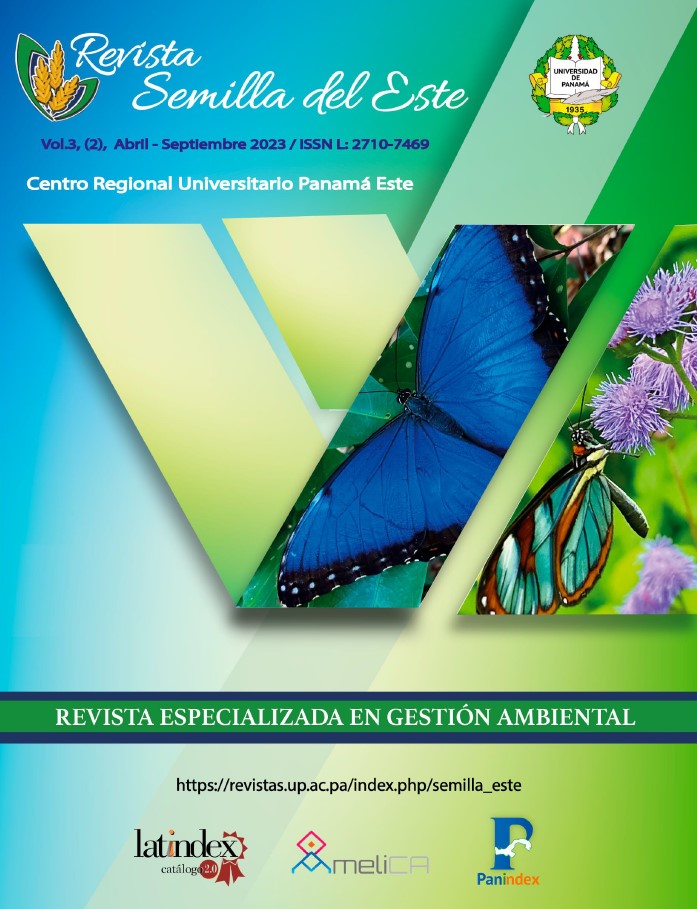


This work is licensed under a Creative Commons Attribution-NonCommercial-ShareAlike 4.0 International License.
The aim of this study was to propose organic alternatives to combat insect pests in backyard agricultural crops. The effectiveness of two bioinsecticides made from aqueous extracts of "Neem" leaves, Azadirachta indica A. Juss., 1830 and "balo" Gliricidia sepium (Jacq. Kunth ex Walp, 1842) were evaluated. This research was carried out from June to September 2021 in the backyard crops of the Manuel María Tejada Roca School, Las Tablas, Los Santos, Panama. The bioinsecticide effect was evaluated, using a Randomized Complete Block design (RCBA) with two treatments and one control. The crops used were "tomato" Solanum lycopersicum L. 1753 and "sweet peppers" Capsicum annuum L. 1838 (Solanaceae), with experimental units of approximately 8.4 m2. The application of plant extracts was weekly, with different sprinklers for each treatment. The monitoring of flying insects, especially Bemisia tabaci (Gennadius, 1889) (Hemiptera: Aleyrodidae) was carried out using yellow plates, the nymphs of B. tabaci were monitored in situ with the help of a magnifying glass and in harvested fruits, their mass in grams was obtained using an analytical balance. To determine significant differences between the treatments, the Tukey test (parametric data) and the Kruskal Wallis test (non-parametric data) were used, from the SPSS statistical package, version 20 (IBM-SPSS, 2011). From the data analysis, it was obtained that the nymphs of B. tabaci showed a statistically significant decrease in the experimental units where the bioinsecticides were applied. In sweet pepper, the average mass of the fruits is significantly lower in the control, versus the treatments. In conclusion, the results show the bioinsecticide effect of the treatments, with better results in the experimental units where the aqueous extract of neem was applied.